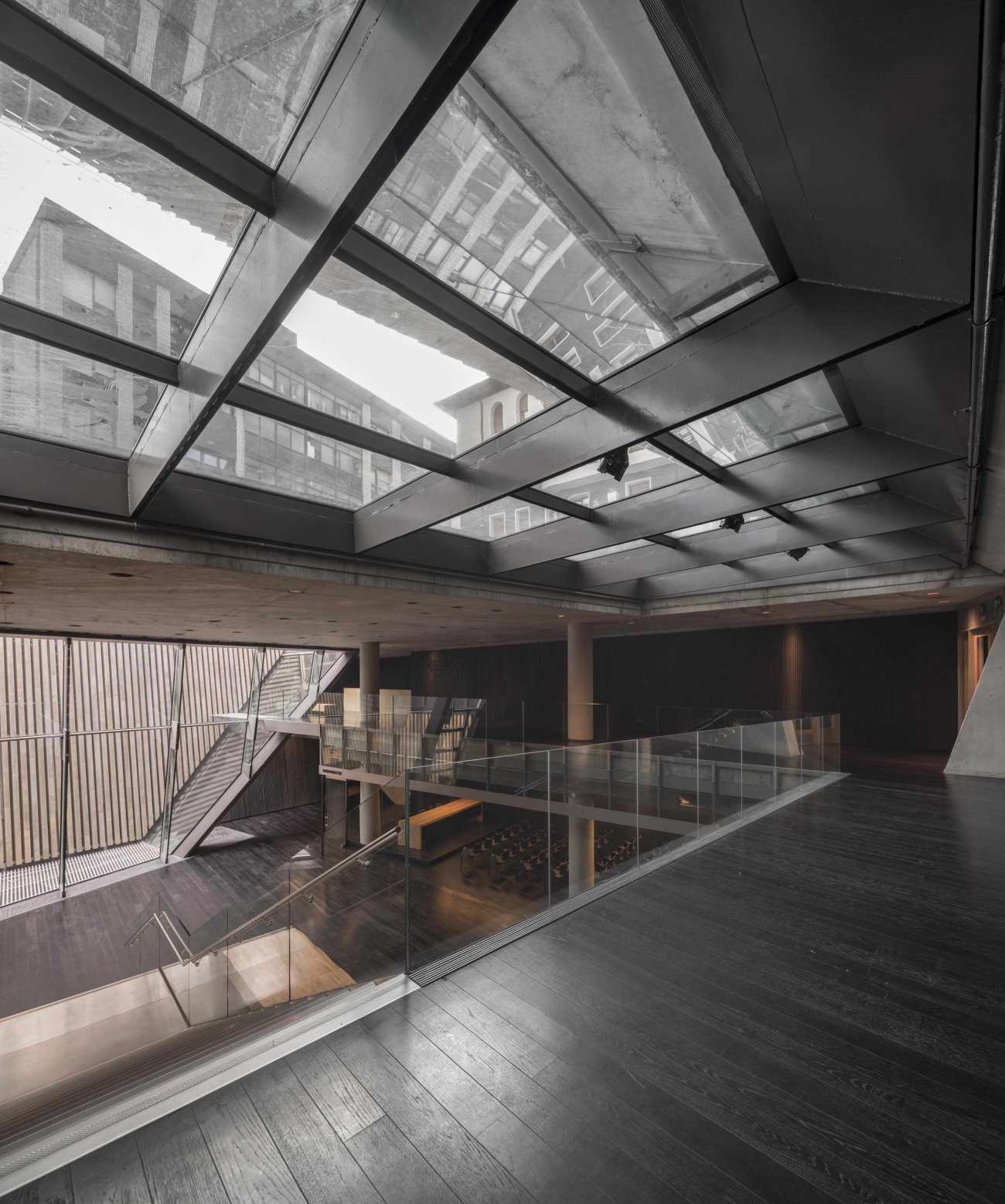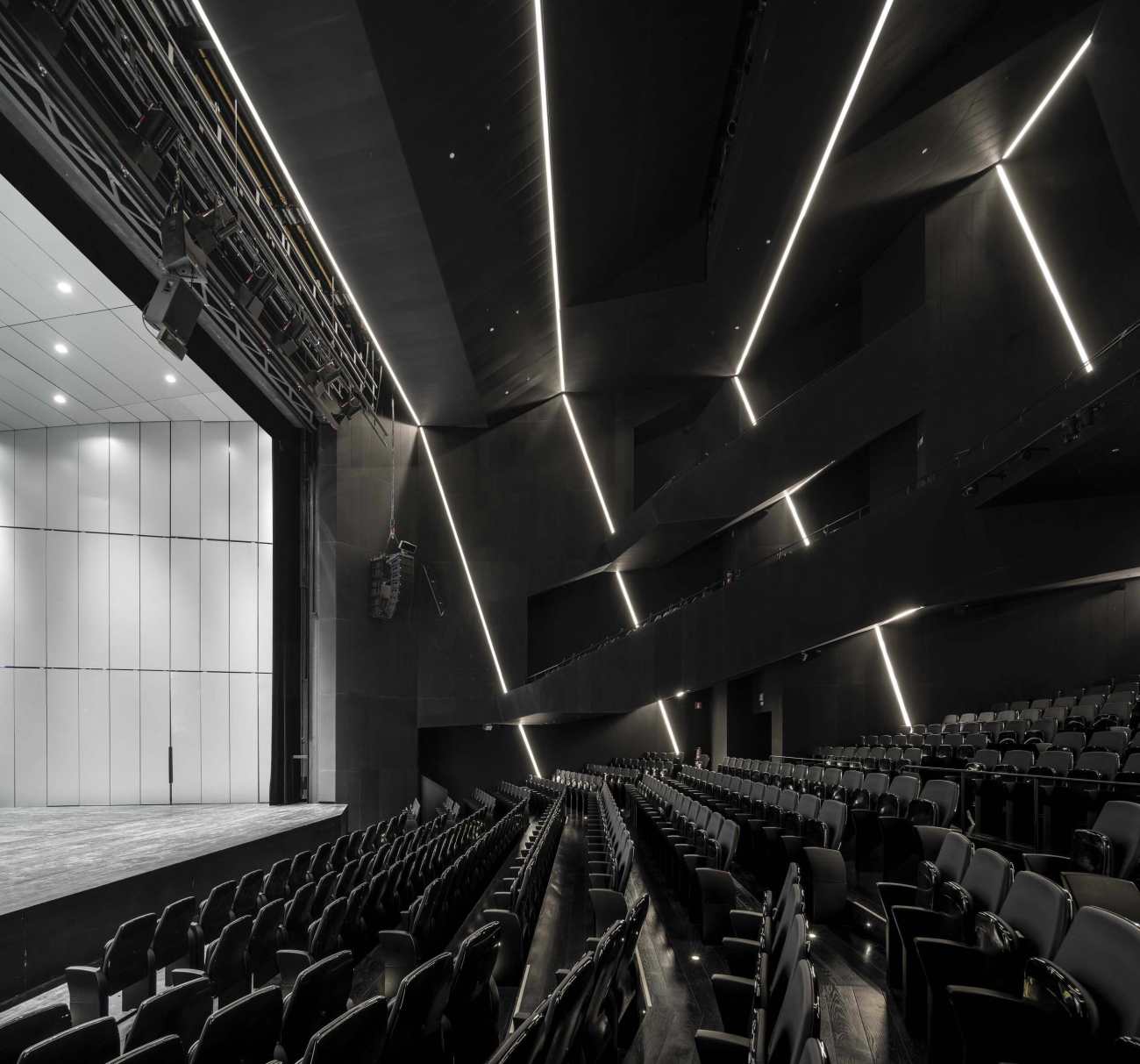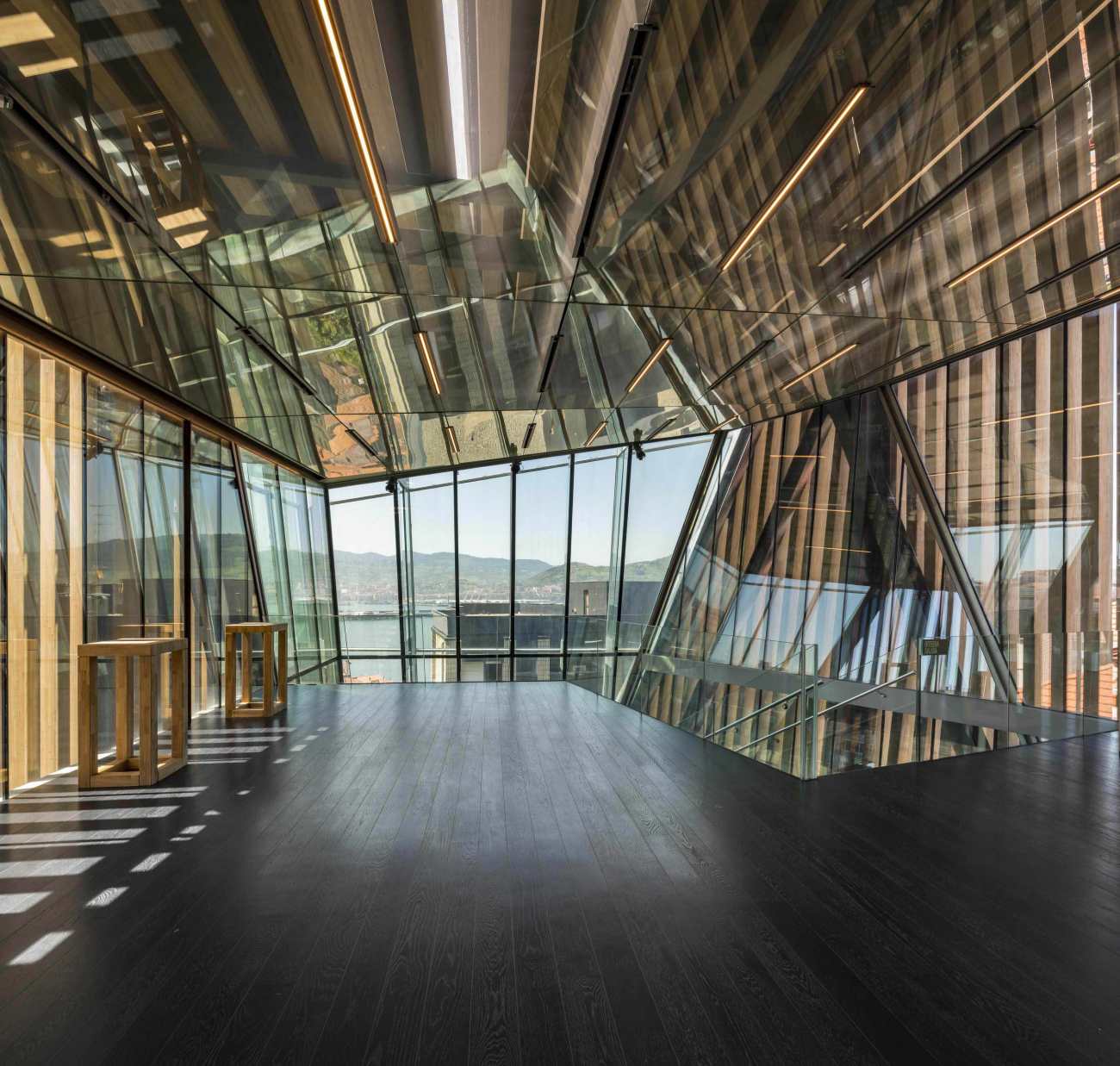| 公司: | LMU Arkitektura | 类型: | 建筑 |
|---|---|---|---|
| 地区: | 西班牙 | 标签: | 学校 | 文化空间 |
设计对象的插入与不同因素的融合发生了冲突:圣尼古拉斯教堂的突出存在,以及与前市政厅附属建筑相邻的广场,周围住宅体量的复杂特征,电信大楼的大墙,以及两条明显的地方动脉的斜向交叉,它们都在这一具有强烈社会和文化内涵的奇异景观中被连接在一起。
The insertion of the designed object clashes with the convergence of different factors: the outstanding presence of Saint Nicholas’ church and the adjoining plaza with the annex building of the former town hall, the intricate identity of the residential volumes around, the harsh party wall of the telecommunications building and the oblique crossing of two marked local arteries. They are all joined together on this singular scenery of intense social and cultural connotations.
 |  |
作为一个整体,现有的空间构成了一个朝南的阳台,面向海湾和毕尔巴鄂港口(Abra),因此,体量的布置对于复杂的方案是最大的挑战。
As a whole, the existing ensemble constitutes a balcony facing south to the Bay and the port of Bilbao (the Abra),crowded with a concerned audience. Thus, the arrangement of the containers for the complex required programme acquires maximal importance.
天窗是自然光稀缺的唯一解决办法,因此天窗的位置立即被新礼堂的上升门厅所取代。这些可见的和隐藏的体量,是周围不同的要求和它们所包含的拥挤功能空间的扩张冲动之间平衡的结果。
Its skyline shows a last and precious opportunity, an open unoccupied window struggling across the fierce competition: in a natural way, its place is immediately taken by the ascending foyer of the new Auditorium. The volumes, both visible and hidden, are the result of the balance between the diverse surrounding requests and the expanding impulse of the crowded programming they contain.
礼堂的主要体量靠在相邻的Telefonica大楼的隔音墙上,而独立的较小的体量则是音乐学校的体量,则根据周围住宅的规模进行调整,从而减轻了综合体的视觉感受。项目还包括通往礼堂的主要通道和后面由上升门厅产生的新的开放空间,门厅被设想成一个巨大的脚手架,以提供通往礼堂不同通道的通道,同时提供全景的视野。
So, the main volume of the Auditorium leans onto the mute party wall of the adjoining Telefonica building, whereas the free standing smaller one, hosting the Municipal Music School, is adjusted to the scale of the residential surroundings, thus lightening the visual perception of the complex. This volume also covers the main access to the Auditorium and the new open space generated behind by the ascending foyer, which is conceived as a great scaffolding to give access to the different access levels to the hall, while providing a panoramic view and showing its own presence to the Abra.
立面的平坦玻璃形成了一个双层系统,从内部插入结构性支撑,由镀锌装置固定。在南面,它是一个通风装置,用于热调节,在北面,它是一个声音校正装置。包层是通过采用橡木指接木板条系统(取自40 x 20厘米的stantard型材),优化为两块(因为它是对角线切断的),作为一个散热装置,并作为一个独特的现场印象延伸到整体。
The flat glazings on the façade makes a double-lay system which inserts its structural buttress from within, fixed by galvanised mechanisms. In the southern face, it acts as a ventilation device for thermal regulation and, in the northen one, as an accoustic correction mechanism. The wrapping is generated by the adoption of an oak finger-joint wooden slats system ( drawn from the 40 x 20 cm stantard profile) optimised in two pieces (as it is severed diagonally), which works as a heat sink and stretches out to the whole as a unique on-site impression.
Project name: Muxikebarri Center of Performing Arts and Music School
Company name: LMU ARKITEKTURA
Website: www.lmuriarte.com
Contact e-mail: info@lmuriarte.com
Project location: GETXO, SPAIN
Completion Year: 2018
Building area (m²): 12.400 m2
Other participants: IBON PASCUAL, LUIS SOLACHI, ALVARO ALBAIZAR, JAVIER SEDANO, ENRIQUE LORENZO, JAVIER ZUBIRÍA, ANA MARTÍN, MARTÍN URRUTIA
Photo credits: Pedro Pegenaute
更新日期:2021-01-26 16:34:25
非常感谢 LMU Arkitektura 带来的精彩项目, 查阅更多Appreciations towards LMU Arkitektura for sharing wonderful work on hhlloo. Click to see more works!





















